We may receive a commission when you use our affiliate links. However, this does not impact our recommendations.
 So, with hours to go before the year ends (at least in my time zone), I’ve one more post for 2011: some of Popular Woodworking Magazine‘s favorite new tools for 2011. Caveat: Because most of us have been out of the office over the holidays, the following were chosen by me, Steve Shanesy, Christopher Schwarz and Glen D. Huey – the other editors and contributing editors may have a few more to add, so check back!
So, with hours to go before the year ends (at least in my time zone), I’ve one more post for 2011: some of Popular Woodworking Magazine‘s favorite new tools for 2011. Caveat: Because most of us have been out of the office over the holidays, the following were chosen by me, Steve Shanesy, Christopher Schwarz and Glen D. Huey – the other editors and contributing editors may have a few more to add, so check back!
At the top of my list (and also on Chris’s list) is Benchcrafted’s Moxon Vise, which I reviewed in the November 2011 issue of the magazine. I’ve been using it since August, and in the last couple weeks it (as well as my next pick) got quite a workout as I dovetailed the carcase and nine drawers for my mom’s Christmas present. I was quite thankful to have this vise lifting the work above my benchtop to keep me from stooping as I sawed. And sawed. And sawed some more. The 5″ cast-iron wheels spin with the flick of the wrist, and clamp down hard to hold the workpiece in place. And, though I didn’t need this function for this build, elongated holes in the front chop allow you to skew it to hold tapered work (think 17th-century-style riven oak). And I’m not gonna lie – the fact that it looks cool doesn’t hurt.
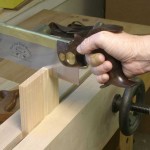 I’m also quite fond of Mark Harrell’s Bad Axe small-handled 10″ dovetail saw (he calls his 10″ saw the Doc Holliday; I prefer to call mine Annie Oakley). While I did get a couple blisters in my recent dovetailing frenzy, those were all from chopping – I think I need to relax my grip on the mallet. My saw, however, was comfortable in my hand during long sessions at the bench, and it cuts like a dream. (I also have a couple reconditioned panel saws from Mark – his sharpening is truly top-notch.) There’s also a “regular” sized handle available, and you get your choice of three wood species (cherry, walnut, mesquite) as well as back preference (blued steel, black nickel-plated steel, brass, copper) and plate thickness (.015, .018). And he’ll sharpen it however you like : 14, 15 or 16 ppi. (My saw has a small walnut handle, brass back, .018 sawplate and is 15 ppi.)
I’m also quite fond of Mark Harrell’s Bad Axe small-handled 10″ dovetail saw (he calls his 10″ saw the Doc Holliday; I prefer to call mine Annie Oakley). While I did get a couple blisters in my recent dovetailing frenzy, those were all from chopping – I think I need to relax my grip on the mallet. My saw, however, was comfortable in my hand during long sessions at the bench, and it cuts like a dream. (I also have a couple reconditioned panel saws from Mark – his sharpening is truly top-notch.) There’s also a “regular” sized handle available, and you get your choice of three wood species (cherry, walnut, mesquite) as well as back preference (blued steel, black nickel-plated steel, brass, copper) and plate thickness (.015, .018). And he’ll sharpen it however you like : 14, 15 or 16 ppi. (My saw has a small walnut handle, brass back, .018 sawplate and is 15 ppi.)
 And now a powered tool – the 10.8-volt Festool CXS drill-driver (which Glen wrote about in the August issue). This compact drill is incredibly well-balanced and easy to grip, and it weighs just less than 2 lbs. It comes with a keyless chuck and a “Centrotec” (quick-change hex) chuck – but it’s worth it to spend the extra $50 and get the right-angle chuck, too (I can’t tell you how many times I’ve had to search our shop for a right-angle drill; problem solved!).
And now a powered tool – the 10.8-volt Festool CXS drill-driver (which Glen wrote about in the August issue). This compact drill is incredibly well-balanced and easy to grip, and it weighs just less than 2 lbs. It comes with a keyless chuck and a “Centrotec” (quick-change hex) chuck – but it’s worth it to spend the extra $50 and get the right-angle chuck, too (I can’t tell you how many times I’ve had to search our shop for a right-angle drill; problem solved!).
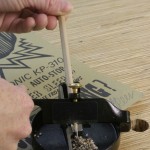 And you’re going to laugh (or scoff) at my last pick…the Little Shaver from Lee Valley/Veritas. What? It’s a sharpening tool! For pencils. What can I say…except that I find the process of sharpening my pencils one shaving at a time to be soothing – and it truly does result in a sharper point than any other method I’ve tried (though to be fair, it’s not like I’ve been testing numerous pencil sharpeners). Really, I just like the relaxation of concentrating on this mundane-but-essential task for a few minutes. And I do love a sharp pencil.
And you’re going to laugh (or scoff) at my last pick…the Little Shaver from Lee Valley/Veritas. What? It’s a sharpening tool! For pencils. What can I say…except that I find the process of sharpening my pencils one shaving at a time to be soothing – and it truly does result in a sharper point than any other method I’ve tried (though to be fair, it’s not like I’ve been testing numerous pencil sharpeners). Really, I just like the relaxation of concentrating on this mundane-but-essential task for a few minutes. And I do love a sharp pencil.
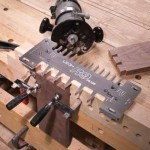 I didn’t give Steve Shanesy much of a chance to mull over his choices, but he immediately came up with two tools from 2011 that he loves – and he reviewed them both in the December issue.
I didn’t give Steve Shanesy much of a chance to mull over his choices, but he immediately came up with two tools from 2011 that he loves – and he reviewed them both in the December issue.
The first is the Leigh R9Plus Joinery System. This inexpensive router jig for through-dovetails and box joints is easy to set up and use, and produces no-gap dovetail joints without any fuss (I haven’t seen it used for box joints, but I’ve no doubt it does just as fine a job there, too). The template allows you to make three sizes of DTs and box joints, on any-width board, by simply moving the easy-to-register jig along the width of your workpiece. It works mounted on your bench with a hand-held router, or can attach to your router table.
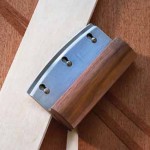 Steve also recommends the Gramercy Tools veneer saw from Tools for Working Wood, which is based on French-patterned saws (he uses it extensively in his latest DVD, “Getting Started with Veneer“). It can be used in either hand against a straightedge, and the handle configuration places your hand directly above the cut, which helps maintain even sawing pressure at 90°. Steve found it easier to steer than other veneer saws he’s used, and the rigid backer plate (to which four blade configurations are easily attached/swapped out) stiffens the blade and provides feedback to the user.
Steve also recommends the Gramercy Tools veneer saw from Tools for Working Wood, which is based on French-patterned saws (he uses it extensively in his latest DVD, “Getting Started with Veneer“). It can be used in either hand against a straightedge, and the handle configuration places your hand directly above the cut, which helps maintain even sawing pressure at 90°. Steve found it easier to steer than other veneer saws he’s used, and the rigid backer plate (to which four blade configurations are easily attached/swapped out) stiffens the blade and provides feedback to the user.
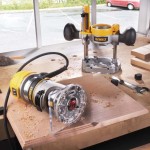 Glen’s top (and immediate) pick was DeWalt’s compact router kit, the DW611PK, which comes with a 1-1/4 horsepower motor and two bases: a fixed base and a plunge base. He reviewed it in our April issue. I used this router while cutting inlay recesses, and can attest that it is a snap to switch between the bases, and that the LED lights that shine directly onto the path of your work are a boon when you’re leaning over and blocking the overhead light. And, it’s comfortable to hold and easy to turn on and off with one hand, and the plunge lock on the plunge base is within easy thumb reach, too.
Glen’s top (and immediate) pick was DeWalt’s compact router kit, the DW611PK, which comes with a 1-1/4 horsepower motor and two bases: a fixed base and a plunge base. He reviewed it in our April issue. I used this router while cutting inlay recesses, and can attest that it is a snap to switch between the bases, and that the LED lights that shine directly onto the path of your work are a boon when you’re leaning over and blocking the overhead light. And, it’s comfortable to hold and easy to turn on and off with one hand, and the plunge lock on the plunge base is within easy thumb reach, too.
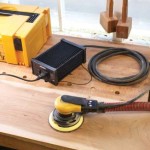 Glen also recommends the CEROS sander from Mirka (which he also reviewed in the April issue). It’s a variable speed (4,000-10,000 rpm) electric-powered tool that has the look and feel of an air-powered sander. It’s available in both 5″ and 6″ models. and plugs into a power-supply box that plugs into a standard 110-volt outlet. At only 1.9 lbs., it’s lightweight, and the low profile gets your hands close to the work. We have it hooked up to a Festool vacuum in the PW shop, and it’s the go-to sander for just about every editor. Most of us use it with Mirka’s (awesome) Abranet sanding discs.
Glen also recommends the CEROS sander from Mirka (which he also reviewed in the April issue). It’s a variable speed (4,000-10,000 rpm) electric-powered tool that has the look and feel of an air-powered sander. It’s available in both 5″ and 6″ models. and plugs into a power-supply box that plugs into a standard 110-volt outlet. At only 1.9 lbs., it’s lightweight, and the low profile gets your hands close to the work. We have it hooked up to a Festool vacuum in the PW shop, and it’s the go-to sander for just about every editor. Most of us use it with Mirka’s (awesome) Abranet sanding discs.
Chris shared with me three of his favorites from 2011 (and he may have one or two more to write about on his blog – so check there in a few days!).
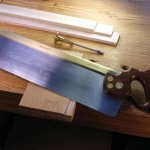 His first pick is the Wenzloff & Sons no-set large tenon saw, which is based on the Disston No. 77 (he reviewed it in our June issue). It’s a 16″ backsaw with no set at all, that tracks a line like a coon dog and leaves a glass-smooth finish on the cut. The blade is tapered in thickness from .025″ at the teeth to .018″ at the spine – and that taper allows it to run without set and not get stuck in the kerf. And, it’s filed at 10 ppi at the heel, and 14 ppi at the toe, which makes it easy to start in even the most recalcitrant hardwoods, but still cut quickly. Chris says that with its hand-filed teeth (25° rake and 25° fleam) it excels at both crosscutting and ripping; I’ll have to trust him on that…I’ve not yet been able to get my hand on it.
His first pick is the Wenzloff & Sons no-set large tenon saw, which is based on the Disston No. 77 (he reviewed it in our June issue). It’s a 16″ backsaw with no set at all, that tracks a line like a coon dog and leaves a glass-smooth finish on the cut. The blade is tapered in thickness from .025″ at the teeth to .018″ at the spine – and that taper allows it to run without set and not get stuck in the kerf. And, it’s filed at 10 ppi at the heel, and 14 ppi at the toe, which makes it easy to start in even the most recalcitrant hardwoods, but still cut quickly. Chris says that with its hand-filed teeth (25° rake and 25° fleam) it excels at both crosscutting and ripping; I’ll have to trust him on that…I’ve not yet been able to get my hand on it.
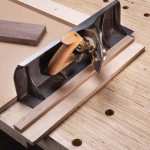 Also on Chris’s list is the Lie-Nielsen Shoot Board Plane (based on the Stanley No. 51). While he admits it’s a luxury (meaning that you don’t truly need a shoot-board plane in your arsenal), Chris also thinks it’s awfully nice to have for its single-purpose use: “It outclasses every other tool I’ve used on a shooting board,” he wrote in the August issue. Try it, and your jack and jointer plane that you usually use for shooting might seem like a redheaded stepchild (I can say that; I am one).
Also on Chris’s list is the Lie-Nielsen Shoot Board Plane (based on the Stanley No. 51). While he admits it’s a luxury (meaning that you don’t truly need a shoot-board plane in your arsenal), Chris also thinks it’s awfully nice to have for its single-purpose use: “It outclasses every other tool I’ve used on a shooting board,” he wrote in the August issue. Try it, and your jack and jointer plane that you usually use for shooting might seem like a redheaded stepchild (I can say that; I am one).
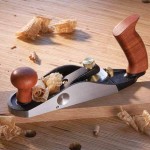 His final pick is the Veritas small bevel-up smoothing plane (he wrote about it in the December issue), which he today described to me as, “The best smoothing plane the company has ever made.” At less than 9″ long and 2-1/4″ wide, this little plane can get into dips that larger smoothers skate over, and it’s lightweight enough (2 lbs., 12 oz.) to wield easily. He also like the adjustable mouth and ductile plane body, and approves of the new finish on the Veritas plane handles. Both A2 and O1 irons are available.
His final pick is the Veritas small bevel-up smoothing plane (he wrote about it in the December issue), which he today described to me as, “The best smoothing plane the company has ever made.” At less than 9″ long and 2-1/4″ wide, this little plane can get into dips that larger smoothers skate over, and it’s lightweight enough (2 lbs., 12 oz.) to wield easily. He also like the adjustable mouth and ductile plane body, and approves of the new finish on the Veritas plane handles. Both A2 and O1 irons are available.
And there are, of course, more reviews from 2011 that aren’t included here – but in case you don’t know this, we like at least something about every tool we write about. We’re not in the business of trashing any maker’s wares – we’re in the business of letting you know which ones we’d use in our own shops – so that’s all you’ll find in the pages of the magazine. You can read all our 2011 tool reviews (and everything else from 2011, of course!) on the 2011 Popular Woodworking Magazine CD, available now for $19.98. And of course, there’s good stuff to look forward to in 2012.
And now, I shall have an adult beverage. Possibly two. Happy New Year!
Here are some supplies and tools we find essential in our everyday work around the shop. We may receive a commission from sales referred by our links; however, we have carefully selected these products for their usefulness and quality.







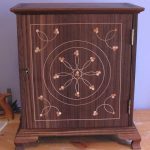

I think the only thing which would make this year better than last would be more photos and videos featuring the one and only Megan Fitzpatrick.
No, I’m not being sexist or a slime ball, or some lech out in cyberspace. She has not only a witty writing (blogging!) talent, but also avails itself in the few videos we have seen and heard thus far. She sure seems like the “life of the party” there at the shop every day.
NEED MORE MEGAN……NEED MORE MEGAN…
anyone else on this bandwagon with me?????
And Happy New Year to the whole PWW gang!!
Noel in Northern NY – where we ain’t got no snow yet!!!
Megan,
Those wheels for the Moxon vise would be 5″ in diameter. It’s the acme threaded rods that are 8″ in length. You stand corrected! Happy New Year!
Megan I share, and totally agree with your pics. Sadly I haven`t set up my BC Moxon yet, but seeing it work at WIA sold me that once I do start doing some more bench work it will be a winner for my use. I also got a Doc Holiday at WIA and I think a lot of the custom saw guys offer a great saw, Mark offers a great saw with a variety of handles so that even guys with hands like mine “German potato-masher-ham-hocks and sausage fingers for appendages” as Mark so eloquently called them, anyhow I`m stuck with them, and evidently I am not a market the other saw makers chose to pursue. Likewise your smaller hands are well fit with a smaller than average handle. I have made a lot of “practice cuts” with my new saw, and it just plain works, both were great $ expenditures in my book.
Happy New Year…
Happy New Year to all! Bonne Année à tous!